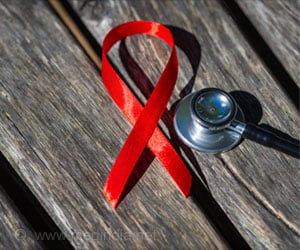University of Pennsylvania researchers have developed a new method for screening drug-resistance forms of HIV that saves both time and money.
University of Pennsylvania researchers have developed a new method for screening drug-resistance forms of HIV that saves both time and money.
Dr. Frederic D. Bushman, Professor of Microbiology at the University of Pennsylvania School of Medicine, combined two genetic tests, which enabled him to rapidly obtained gene sequences from multiple drug-resistant HIV samples at once."There is considerable interest in identifying minor drug resistant variants prior to initiating new therapy, in order to allow treatment with the most effective drugs," explains Dr. Bushman, whose study appears online in Nucleic Acids Research.
"Treatment of HIV infection often fails because viruses mutate to resist drugs. Under the pressure of drug treatment, small populations of resistant viruses can quickly grow to become the majority, resulting in treatment failure due to drug resistance," he adds.
Around 40 million people across the world are currently living with HIV/AIDS, according to the Joint United Nations Programme on HIV/AIDS (UNAIDS). The commonly prescribed cocktails of antiretroviral drugs help slow the debilitating effects of the virus by disrupting it at various stages in its replication, but still quickly mutating forms of HIV can complicate treatment outcomes.
The researchers reckon that nearly 50 per cent of individuals being treated for HIV in the US carry drug-resistant forms of HIV, which was either caused by mutations in the virus in response to drug treatment or by infection with a resistant form of the virus. They feel that the increased availability of antiretroviral drugs to meet the HIV/AIDS needs of developing countries in recent years may lead to a global rise in drug-resistant strains of HIV.
"To overcome drug resistance, patients must be treated with drugs to which the HIV virus is still susceptible," says Bushman.
With a view to increase the sensitivity of HIV screening techniques and decrease the time and cost of the tests, Dr. Bushman examined seven samples of mutated strains of HIV, including three HIV samples from patients who had experienced antiretroviral multi-drug resistance.
When the two methods were combined, the researchers were able to quantify and characterize hundreds of thousands of HIV variants for drug resistance in a single test. The new screening technique also uncovered four rare, minor drug-resistant mutations in the patient samples of HIV that had gone undetected by standard screening measures.
Dr. Bushman believes that these small drug-resistant populations of HIV may explain why some patients do not respond to antiretroviral treatment, as the minor alleles can rapidly grow out, generating new populations of drug-resistant viruses.
He is now planning to apply the new method to optimise drug-resistance testing in the US, and several developing countries.
"Thanks to DNA bar coding and pyrosequencing, clinicians should be able to optimize treatment for their patients with much more relevant information in front of them," says Bushman.
Source-ANI
LIN/C
 MEDINDIA
MEDINDIA
 Email
Email









